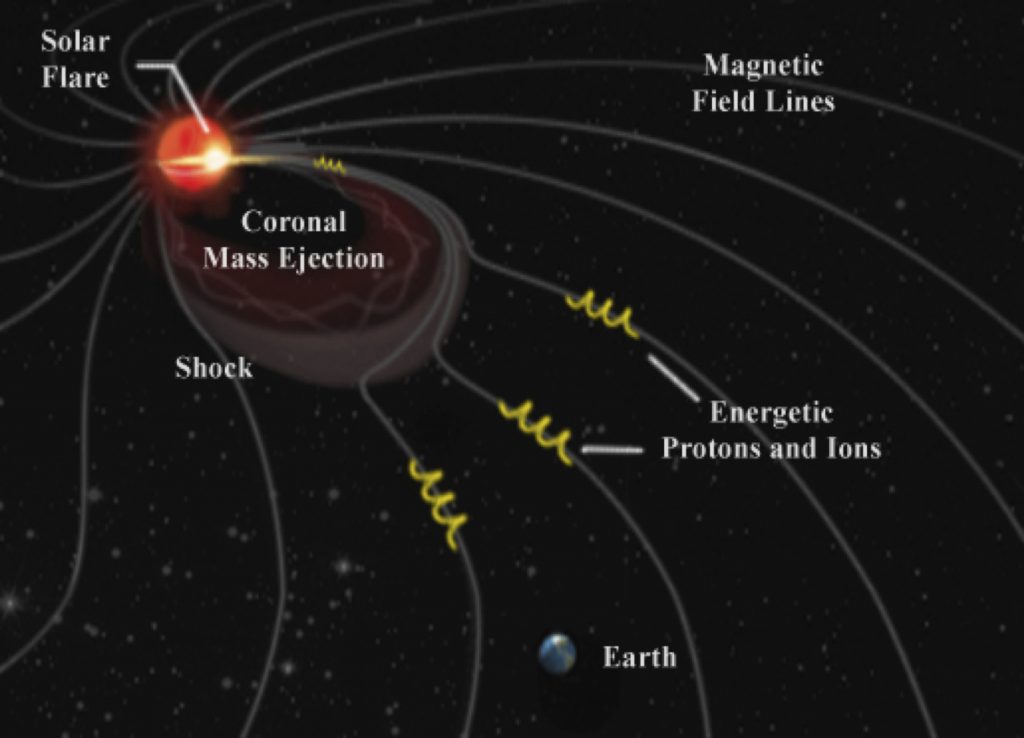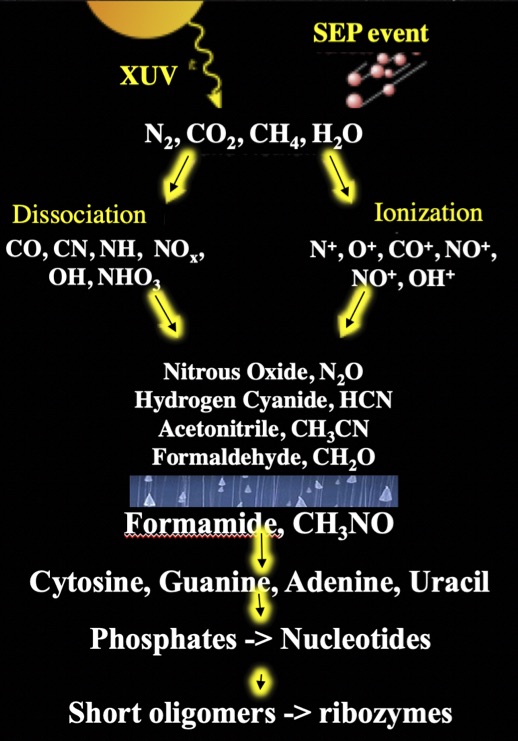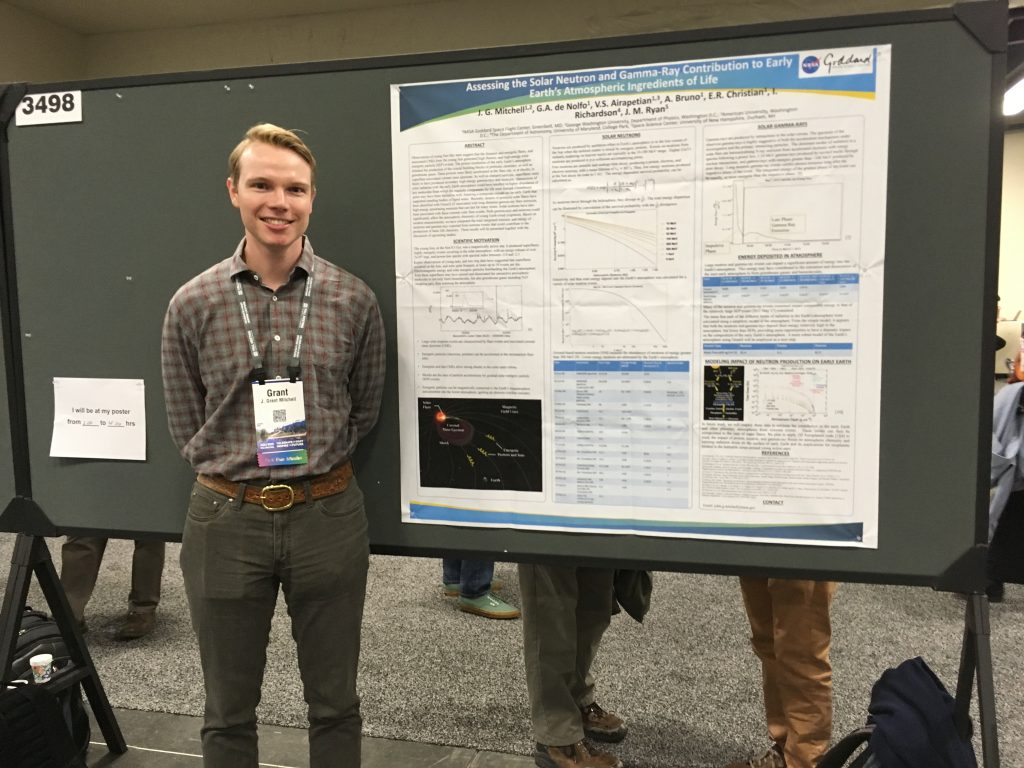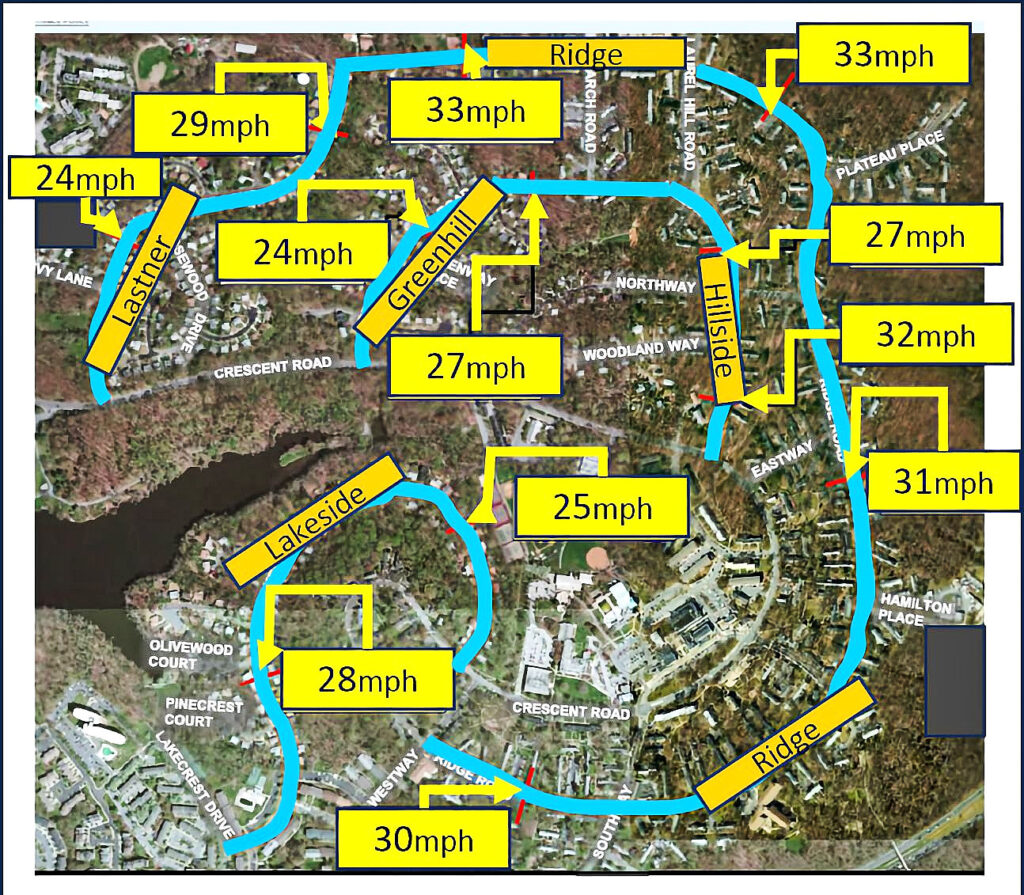What could have started life on Earth?
It’s a broad question. Much broader than most scientists work with when presenting a poster at the 30,000 person American Geophysical Union meeting in San Francisco on December 10.
And to be fair, it wasn’t exactly what Eleanor Roosevelt High School class of 2007 alum J. Grant Mitchell was asking. Specifically he and his colleagues presented a poster titled: Assessing the Solar Neutron and Gamma-ray Contribution to Early Earth’s Atmospheric Ingredients of Life.
Which boils down to, what could have started life on Earth, or maybe, it would be better put: Could eruptions from a young sun have provided enough energy to start life on Earth without neutrons or gamma rays?
Most of the time, Mitchell studies neutral particles, such as gamma rays and neutrons. He works in the laboratory of Georgia de Nolfo, a Goddard Space Flight Center physicist who studies radiation as well as neutral particles in the area between Earth and the Sun. Mitchell is also working on a Ph.D. in physics at George Washington University.
The lab is set up to look at present day particle events, so looking at the beginnings of life on Earth is a detour. But Mitchell wanted to put the time in because, he said, “You can’t get any more basic than this.”
The team, which consists of Mitchell, de Nolfo, Vladimir Airapetian, Alessandro Bruno, Eric Christian, Ian Richardson and James Ryan, worked on the issue of types of energy. It is likely that the Sun provided the energy that changed the gases on Earth. This has been the assumption all along, but was not broken down into the different types of energy that solar flares emit.
That was where this group came in. They started with a known scenario.
When our planet was young, it was enveloped by inert gases, including nitrogen and oxygen. Those gases would have stayed inert, but something happened.
The Sun was young then too. A young star sends off much more energy than an older, more mature star. Scientists know this because of the observations from the Kepler Telescope. Kepler looks at many stars, some old, some young. And young stars that are similar to our Sun send off as many as 10 flares a day.
The energy from these solar eruptions is huge. Scientists have measured the energy by looking at tree-ring data that corresponds with known solar flares from our Sun. Obviously if there were tree rings to look at, life on Earth had already been established so this wasn’t in situ measurements. But the team used that data to extrapolate back. They assumed that if the Sun sent off that kind of energy now, it sent off at least that much energy when it was a young star.
So Mitchell and his colleagues used a simple computer model of a young planet and its inert gasses. They were able to predict the behavior of high-energy charged particles, and will add the effect of neutral gamma rays and neutrons next. Gamma rays have higher energy than X-rays. They are used to treat some types of cancer. They are powerful, but not at the level of the high-energy charged particles, which are associated with nuclear bombs.
With the behaviors of different energy particles ready, the model bombarded the fictitious planet. Solar flare after solar flare hit the atmosphere of inert gases.
According to the model, the high-energy particles impact the upper atmosphere. But Mitchell and his team know that the gamma rays and neutrons keep traveling. They don’t get to the surface, but do get further into the gaseous mixture. And they still had enough energy to have an effect.
Which means it could have been the gamma rays and neutrons that were responsible for the first steps in life. Their energy changed nitrogen and oxygen gases into the greenhouse gas nitrous oxide (laughing gas). And that set Earth on the path to being a planet warm enough to support liquid water.
Mitchell said the next steps are to use a more sophisticated model and collect more information from scientists who study planets. This isn’t his day job or his dissertation. But, still, he said, the beginning of life on Earth “is a fun side project.”






